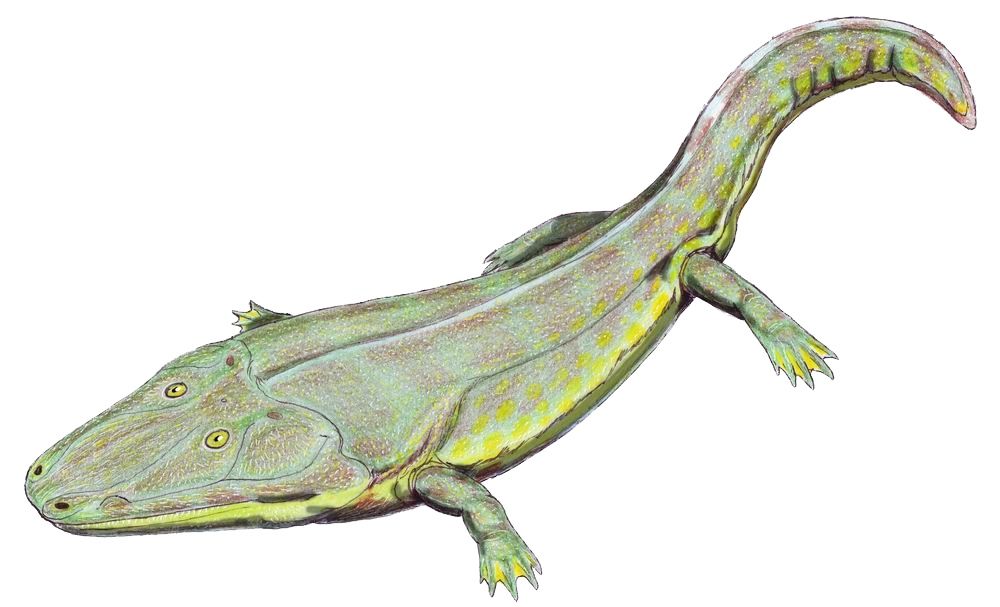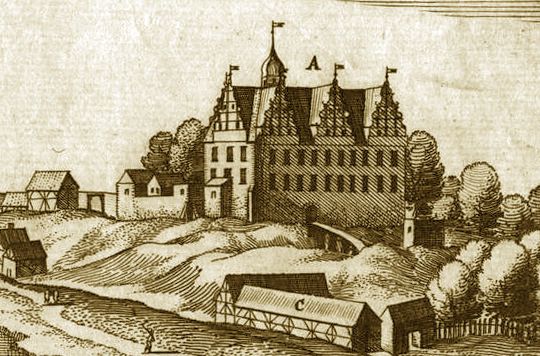|
List Of Phytosaur-bearing Stratigraphic Units ...
Geological strata known to contain the fossils of the extinct group of reptiles known as phytosaurs occur predominantly in the United States and Europe. List of formations {{Lists-of-fossiliferous-stratigraphic-units-by-preserved-taxon Phytosaur Phytosaurs (Φυτόσαυροι in greek) are an extinct group of large, mostly semiaquatic Late Triassic archosauriform reptiles. Phytosaurs belong to the order Phytosauria. Phytosauria and Phytosauridae are often considered to be equivalent ... [...More Info...] [...Related Items...] OR: [Wikipedia] [Google] [Baidu] |
Phytosaur
Phytosaurs (Φυτόσαυροι in greek) are an extinct group of large, mostly semiaquatic Late Triassic archosauriform reptiles. Phytosaurs belong to the order Phytosauria. Phytosauria and Phytosauridae are often considered to be equivalent groupings containing the same species, but some studies have identified non-phytosaurid phytosaurians. Phytosaurs were long-snouted and heavily armoured, bearing a remarkable resemblance to modern crocodilians in size, appearance, and lifestyle, as an example of convergence or parallel evolution. The name "phytosaur" means "plant reptile", as the first fossils of phytosaurs were mistakenly thought to belong to plant eaters. The name is misleading because the sharp teeth in phytosaur jaws clearly show that they were predators. For many years, phytosaurs were considered to be the most basal group of Pseudosuchia (crocodile-line archosaurs), meaning that they were thought to be more closely related to the crocodilians than to birds (the othe ... [...More Info...] [...Related Items...] OR: [Wikipedia] [Google] [Baidu] |
Sloan Canyon Formation
The Sloan Canyon Formation is a late Triassic geologic formation exposed in northeastern New Mexico. Fossil theropod tracks have been reported from the formation. Description The Sloan Canyon Formation consists of variegated reddish-brown, purple, and green mudstones, with some beds of siltstone and marl. It rests on the Travesser Formation and is overlain by the Sheep Pen Sandstone. Total thickness is . The formation is usually assigned to the Dockum Group. The proposal of Spencer G. Lucas and his collaborators to abandon the Dockum Group, possibly in favor of the Chinle Group, is highly controversial. Fossils A phytosaur skull was found in the Sloan Canyon Formation in 1939, establishing that it was a Triassic formation. The formation is part of one of the largest continuously mapped Triassic vertebrate tracksites, with the earliest studied exposures at Peacock Canyon. Ichnofossils (track fossils) include the archosaurs '' Brachychirotherium'' and ''Chirotherium'', a po ... [...More Info...] [...Related Items...] OR: [Wikipedia] [Google] [Baidu] |
Fleming Fjord Formation
The Fleming Fjord Formation, alternatively called the Fleming Fjord Group is an Upper Triassic geological formation in the northeastern coast of Jameson Land, Greenland. It consists of terrestrial sediments and is known for its fossil content. Description It is of Norian to Rhaetian age and is subdivided into three members; at the base the Edderfugledal Member, followed by the Malmros Klint Member with the Ørsted Dal Member at the top. It was deposited in a large shallow to ephemeral lake. Paleobiota The fauna of Fleming Fjord is diverse, including sauropodomorph dinosaurs, pterosaurs, temnospondyls, mammaliaforms, aetosaurs, and other taxa. Freshwater unionid bivalves and conchostracans have been reported from the Malmros Klint Member. Fish Lungfish, actinopterygian, and chondrichthyan teeth have been reported from the Malmros Klint Member. Amphibians Reptiles Besides the forms described below, a diverse ichnofauna of small and large tracks has also been reported ... [...More Info...] [...Related Items...] OR: [Wikipedia] [Google] [Baidu] |
Drawno Beds Formation
Drawno (german: Neuwedell; csb, Nowi Wedel) is a town in Choszczno County, West Pomeranian Voivodeship, Poland, with 2,219 inhabitants as of December 2021. The headquarters of the Drawa National Park (''Drawieński Park Narodowy'') are located here. History In the 10th-11th centuries, using the suitable location between two lakes, a Slavic gród and a fishing village were established here. The settlement was a part of Poland during the reign of the first Polish rulers Mieszko I and Bolesław I the Brave. In different periods in the Middle Ages it was a part of Pomerania or Greater Poland. In the 13th century Drawno was part of the Duchy of Greater Poland, a province of fragmented Poland. Town rights were granted between 1313 and 1333. From 1373 Drawno was part of the Lands of the Bohemian Crown (or ''Czech Lands''), ruled by the Luxembourg dynasty. In 1402, the Luxembourgs reached an agreement with Poland in Kraków. Poland was to buy and re-incorporate Drawno and its surro ... [...More Info...] [...Related Items...] OR: [Wikipedia] [Google] [Baidu] |
Falling Creek Formation
The Doswell Formation (also known as the Doswell Group) is a geologic unit of Upper Triassic age, part of the Newark Supergroup. The Doswell Formation was originally named to refer to a geological sequence which forms the lower part of the sedimentary fill of the Taylorsville Basin in Virginia and Maryland. This sequence was deposited by lakes and rivers in the developing rift basin. However, a 2016 study determined that several geological layers in Pennsylvania as well as the neighboring Richmond Basin of Virginia also qualified as components of the Doswell Formation. The most diverse and fossiliferous component of the Doswell formation is the Vinita member, also sometimes referred to as the Turkey Branch, Tuckahoe, or Falling Creek Formations in earlier publications. The Doswell formation is biostratigraphically characterized by a fauna including the fish '' Dictyopyge macrurus'' and the conchostracan '' Laxitextella multireticulata''. The Richmond Basin has several notable fossi ... [...More Info...] [...Related Items...] OR: [Wikipedia] [Google] [Baidu] |
Doswell Group
The Doswell Formation (also known as the Doswell Group) is a geologic unit of Upper Triassic age, part of the Newark Supergroup. The Doswell Formation was originally named to refer to a geological sequence which forms the lower part of the sedimentary fill of the Taylorsville Basin in Virginia and Maryland. This sequence was deposited by lakes and rivers in the developing rift basin. However, a 2016 study determined that several geological layers in Pennsylvania as well as the neighboring Richmond Basin of Virginia also qualified as components of the Doswell Formation. The most diverse and fossiliferous component of the Doswell formation is the Vinita member, also sometimes referred to as the Turkey Branch, Tuckahoe, or Falling Creek Formations in earlier publications. The Doswell formation is biostratigraphically characterized by a fauna including the fish '' Dictyopyge macrurus'' and the conchostracan '' Laxitextella multireticulata''. The Richmond Basin has several notable fossi ... [...More Info...] [...Related Items...] OR: [Wikipedia] [Google] [Baidu] |
Cooper Canyon Formation
The Cooper Canyon Formation is a geological formation of Norian age in Texas and New Mexico.Weishampel, David B; et al. (2004).Dinosaur distribution (Late Triassic, North America)" In: Weishampel, David B.; Dodson, Peter; and Osmólska, Halszka (eds.): The Dinosauria, 2nd, Berkeley: University of California Press. Pp. 518–521. . Type area of the formation is situated in Garza County, Texas. An equivalent formation in eastern New Mexico is named Bull Canyon Formation. Some researchers argue that the latter name should be abandoned. The formation consist of reddish siltstone and mudstone with lenses of sandstone and conglomerate. Thickness of the formation in the type area is 161.5 meters. It increases to the south, and in some places exceeds 200 m. The formation contains diverse fossils, including vertebrate remains. Vertebrate fauna Temnospondyls Allokotosaurs Archosaurs and related Procolophonomorphs Misc. See also * List of dinosaur-bearing rock forma ... [...More Info...] [...Related Items...] OR: [Wikipedia] [Google] [Baidu] |
Colorado City Formation
The Colorado City Formation is a geologic formation in Texas, United States. It preserves fossils dating back to the Triassic period. Biochronological significance The Otis Chalk localities that are situated in the Colorado City Formation form the basis of the Otischalkian Land Vertebrate Faunachron (LVF), which is defined by the first appearance of ''Parasuchus''.Lucas, S. G., Hunt, A. P., Heckert, A. B., and Spielmann, J. A., (2007) Global Triassic tetrapod biostratigraphy and biochronology: 2007 status: New Mexico Museum of Natural History and Science Bulletin, v. 41 (The Global Triassic), p. 229- 240. Vertebrate fauna See also * List of fossiliferous stratigraphic units in Texas * Paleontology in Texas Paleontology in Texas refers to paleontological research occurring within or conducted by people from the U.S. state of Texas. Author Marian Murray has remarked that "Texas is as big for fossils as it is for everything else." Some of the most impor ... References * T ... [...More Info...] [...Related Items...] OR: [Wikipedia] [Google] [Baidu] |
Camp Springs Formation
The Camp Springs Formation is a geologic formation in Texas. It preserves fossils dating back to the Triassic period. See also * List of fossiliferous stratigraphic units in Texas * Paleontology in Texas Paleontology in Texas refers to paleontological research occurring within or conducted by people from the U.S. state of Texas. Author Marian Murray has remarked that "Texas is as big for fossils as it is for everything else." Some of the most imp ... References * Triassic geology of Texas {{Triassic-stub ... [...More Info...] [...Related Items...] OR: [Wikipedia] [Google] [Baidu] |
Bull Canyon Formation
The Cooper Canyon Formation is a geological formation of Norian age in Texas and New Mexico.Weishampel, David B; et al. (2004).Dinosaur distribution (Late Triassic, North America)" In: Weishampel, David B.; Dodson, Peter; and Osmólska, Halszka (eds.): The Dinosauria, 2nd, Berkeley: University of California Press. Pp. 518–521. . Type area of the formation is situated in Garza County, Texas. An equivalent formation in eastern New Mexico is named Bull Canyon Formation. Some researchers argue that the latter name should be abandoned. The formation consist of reddish siltstone and mudstone with lenses of sandstone and conglomerate. Thickness of the formation in the type area is 161.5 meters. It increases to the south, and in some places exceeds 200 m. The formation contains diverse fossils, including vertebrate remains. Vertebrate fauna Temnospondyls Allokotosaurs Archosaurs and related Procolophonomorphs Misc. See also * List of dinosaur-bearing rock formatio ... [...More Info...] [...Related Items...] OR: [Wikipedia] [Google] [Baidu] |
Dockum Group
The Dockum is a Late Triassic (approximately late Carnian through Rhaetian, or 223–200 Ma) geologic group found primarily on the Llano Estacado of western Texas and eastern New Mexico with minor exposures in southwestern Kansas, eastern Colorado, and Oklahoma panhandle. The Dockum reaches a maximum thickness of slightly over 650 m but is usually much thinner. The Dockum rests on an unconformity over the Anisian (242–234 Ma) aged Anton Chico Formation. The Dockum and Chinle Formation were deposited roughly at the same time and share many of the same vertebrates and plant fossils. They appear to have very similar paleoenviroments. The two units are approximately separated by the Rio Grande in central New Mexico. This has led to controversy over the stratigraphic nomenclature for the Chinle and Dockum. History of investigation There is no designated type locality for this formation. The Dockum was named by William Fletcher Cummins for a good exposure in vicinity of town ... [...More Info...] [...Related Items...] OR: [Wikipedia] [Google] [Baidu] |
Popo Agie Formation
The Popo Agie Formation is a Triassic geologic formation that crops out in western Wyoming, western Colorado, and Utah. It was deposited during the Late Triassic in fluvial (river) and lacustrine (lake) environments that existed across much of what is now the American southwest. Fragmentary fossils of prehistoric reptiles and amphibians, including pseudosuchian reptiles and temnospondyl amphibians, have been discovered in the Popo Agie Formation. Dinosaur remains are also among the fossils that have been recovered from the formation, although none have yet been referred to a specific genus.Weishampel, et al. (2004). "Dinosaur distribution." Pp. 517-607. Paleobiota Amphibians Reptiles Synapsids See also * List of dinosaur-bearing rock formations ** List of stratigraphic units with indeterminate dinosaur fossils This list of stratigraphic units with indeterminate dinosaur fossils includes stratigraphic units of formation rank or higher that have produced dinosaur body ... [...More Info...] [...Related Items...] OR: [Wikipedia] [Google] [Baidu] |



